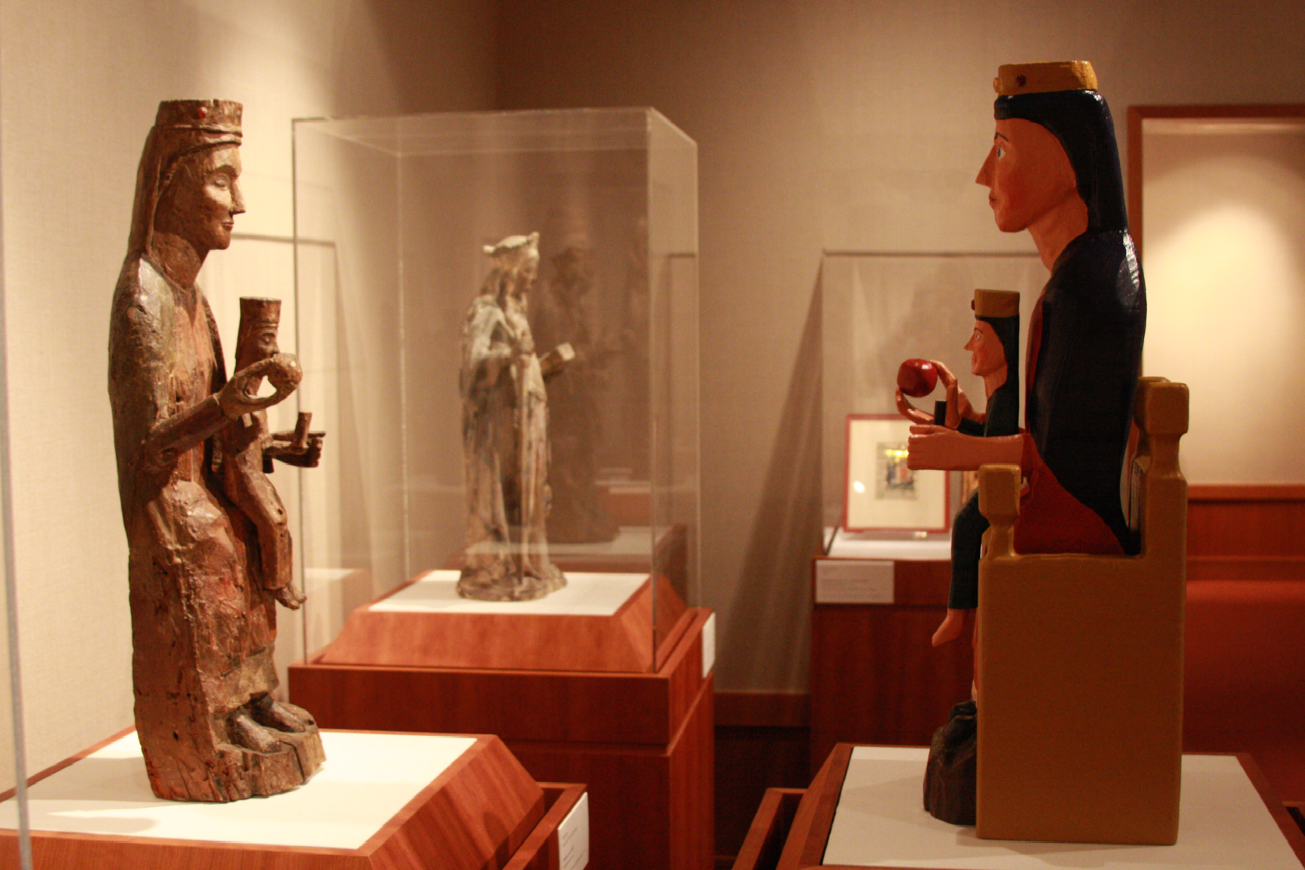
Last Thursday evening, a hush fell over Vassar Chapel as a crowd of close to two hundred people heard the sound of a choir singing in the distance. The lights dimmed and a sculpture of a Madonna and Child was led down the central aisle surrounded by students holding flickering candles. This was not the beginning of a religious service, but instead the start of the Kaleidoscope lecture, “Piety and Pilgrimage: The Life and Times of a 13th-century Madonna and Child”.
Why such a dramatic start? The goal of the procession and the evening’s program was to demonstrate how a medieval Spanish sculpture of the Madonna and Child from the Art Center’s permanent collection would have been considered by its original audience of thirteenth-century Christians. The procession of a recreation of the Madonna and Child was meant contrast with how the modern viewer usually encounters the original work of art: standing still in a quiet, climate controlled gallery. As the evening unfolded, we learned from Vassar College faculty and students what a radical change this is from the sculpture’s early life over seven hundred years ago.

Andrew Tallon, exploring the sculpture’s art historical context, pointed out that the work was made from walnut- not a heavier material- because it was made to move. And as evidence by the considerable wear to the work, it was moved and repainted and moved again throughout the course of its active medieval life. Nicholas Rocha, Vassar College class of 2011 and director of the Vassar Camerata, discussed the music that accompanied a medieval procession and the intensity of the original performers that he and his fellow students strived to capture in their own singing. Nancy Bisaha discussed the Cult of the Virgin and what the Virgin Mary represented to Christians in the High Middle Ages. Dorothy Kim further explored how a thirteenth-century Christian perceived the Madonna and the reported miracles involving statues of the Virgin. These reports of Virgin Mary as intercessor in all matters- from household chores to legal disputes- revealed the expectations a thirteenth-century Christian would have had of the sculpture.
Joseph Tanski then discussed what can be learned about this thirteenth-century sculpture using twenty-first century technology. Using a handheld X-ray Fluorescence spectrometer, Tanski revealed that the crown of the Virgin contained aragonite, a material that would have been found in central Spain. This discovery suggests that the sculpture was most likely produced in Spain and provides further information about its history.
The Madonna and Child that was processed was a recreation of the original sculpture made by Tyler Rowland and Rhys Bambrick, Vassar College class of 2011. Rowland and Bambrick documented the intense process of recreating this medieval work of art in a film they presented at the close of the evening (watch it above). The dedication of Rowland and Bambrick to the production of this sculpture reminds the twenty-first century viewer of the devotion of a medieval artist to their work. As the lecture ended and the recession began, all eyes were on the recreation of the Madonna and Child.





